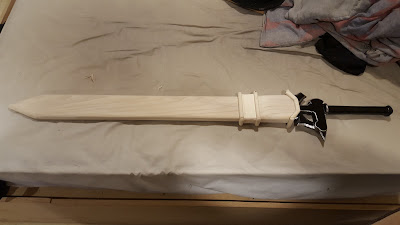I did and lost the best job I ever had. Working with FIRST and the Jean-de-brébeuf students have been, not only the closest I've been to actual engineering, both the project management aspect and the design aspect, but also the most fun I've had in a job...no matter how I often felt like a headless chicken...on fire.
I also got to meet great and fun and motivating and nerdy people by joining GAUL. I've been wanting to join for a while, since it's inception actually. But back then I thought I was too green, not knowledgeable enough about...well, anything related to engineering. Now I know it actually kind of was the same for the founders!
I've had 3 goals this year;
- Find a girlfriend
- Do better academically
- Learn guitar enough to play Malukah's version of "The Dragonborn Comes"
I failed at doing the first and the last ones...
But I did do better academically! Only marginally, but I believe I know what my problem is. I've never been actually GOOD at math. I'm at most okay...compared to other engineering students.
I've also managed to finish a few long projects: Cleaning my workshop and building a new table, Elucidator and it's scabbard, which I had been working on for years...and other stuff, i'm sure.
This brings us to this year's goals. I've been weirdly motivated to improve myself during this holiday, beside a short 4~5 days depression.
As such, I started watching MIT opencourseware classes on youtube, restarted practicing guitar and ocarina, and cleaning up my workshop. I've also decided to set a list of goals for 2016. Goals, not resolutions, which means my list has to have quantitative things in it, and not just "be better at math durrr hurr"
So withouth further ado, here is my list of Goals for 2016:
Engineering:
- Be better at Math
- Review Linear Algebra, do 10 problems a week from kreyszig and cegep book
- Review Calculus, do 10 problems a week from the kreyszig
- Study discretization and equation-setting in mechanism
- 1h of programming practice a week
- Finish Re-entry Simulator
- Review Dynamics
- Design a High powered rocket for VIPE 2016 (July ish?)
- Design a combat robot and an Arena
Cosplay:
- Finish Kirito
- Monster hunter foam build (Full armor set + weapon)
- Spacegun (Warframe/Borderlands)
- Lightsaber with sound effects
Life:
- 30 minutes of Rocksmith every 2 days
- 30 minutes of Ocarina practice every 3 days, once a week without fingering chart
- Build 1 plane from the book “Planes A complete history” every week
- Read a novel every 2 months
I
With that, I've also created an Excel Spreadsheet to keep track of everything that has a X/week, so I can hit myself at the end of the year for not following it!
Finally, I have a post I should be finishing about Dark repulsor (Which i've been working on a bit) and my FEA class. If my cold continues, it should be done by next week!(the post, not my class and my prop) I could have done it first, but then, new year is today, not next week.
Happy new year everyone!






.jpg/revision/latest?cb=20140928191847)










